What Is A Solar Backup Battery?
A common misconception about solar power is that it only works when the sun is shining — but that’s not true! Solar backup batteries store excess energy produced by solar panels for later use. Through solar batteries, homeowners can use solar-generated energy at night, on cloudy days or when the power goes out.
Solar batteries can help improve a solar system’s efficiency and versatility. Solar panels provide clean energy, but without a solar battery can only power your home during the day. Depending on your lifestyle and energy needs, backup batteries can be worth the investment and improve your solar panel system for home or business.
Solar batteries can be included in your home’s solar power system or can be added to an existing solar setup. Similar to solar panels, consumers have options when it comes to solar batteries. We know you have options and understand the unique considerations which is why we’ve compiled a list of ten solar batteries based on different situations. Homeowners can most likely use the Enact Consumer app and integrate it with their solar battery to monitor performance and savings.
Why Do Solar Backup Batteries Matter?
Solar batteries are important because they store excess energy created by your solar panels, instead of wasting the energy or sending energy back to the power grid. Homeowners and small business owners can use solar backup batteries to store power and use it at night time, during cloudy or stormy days, at peak power use times or when the power goes out.
What To Look For In A Solar Backup Battery?
There are multiple factors to consider when purchasing a backup battery for your home’s solar panel system. In the ten products we list below, we include the battery capacity, usable capacity, roundtrip efficiency, depth of discharge, warranty and other factors. Definitions for these terms can be found at the bottom of this article.
Some other factors to consider include the temperature ranges, weight, location for your home (indoor or outdoor) and safety. When evaluating backup batteries, it’s important for you to think about the cost and safety of the product. The cost of the battery is only a portion of what you need to consider. Other cost considerations include the cost of the cabinet, inverters and installation costs. In some states and situations, solar backup batteries may be eligible for a tax incentive or subsidy from your state or city.
The 10 Best Solar Backup Batteries in 2022
Duracell Power Center
Duracell, the same battery maker that powers your TV remote or coffee frother, has recently entered the backup battery market. The Duracell Power Center is a simple, modular system that is compatible with new or existing solar setups. You can mount the backup battery to your wall, either inside or outside your home. The company offers an easy-to-install wall-mount battery with live support and a mobile app to track your energy savings. For almost a century, Duracell has powered America and can offer you power when you need it.
Specs:
- Power Rating: 5 kW
- Storage Capacity: 14-42 kWh
- Continuous / Peak Power Output: 5 kW / 8.5 kW
- Roundtrip Efficiency: 85.70%
- Chemistry: LFP
- AC Coupled
- Operating Temperature 32°F to 122°
- Warranty: 10-15 Years
- End of Warranty Capacity: 70%
What We Like:
- Duracell Power Center offers twice the life cycle design as other back up batteries with over 6,000 cycles
- Modular energy storage cabinets allows homeowners to store 14-42 kWh
- Can be installed onto an existing system and can charge from the grid if needed
- 15 year warranty on power electronics, 10 year warranty on battery performance
- Integrated to the Enact Consumer App
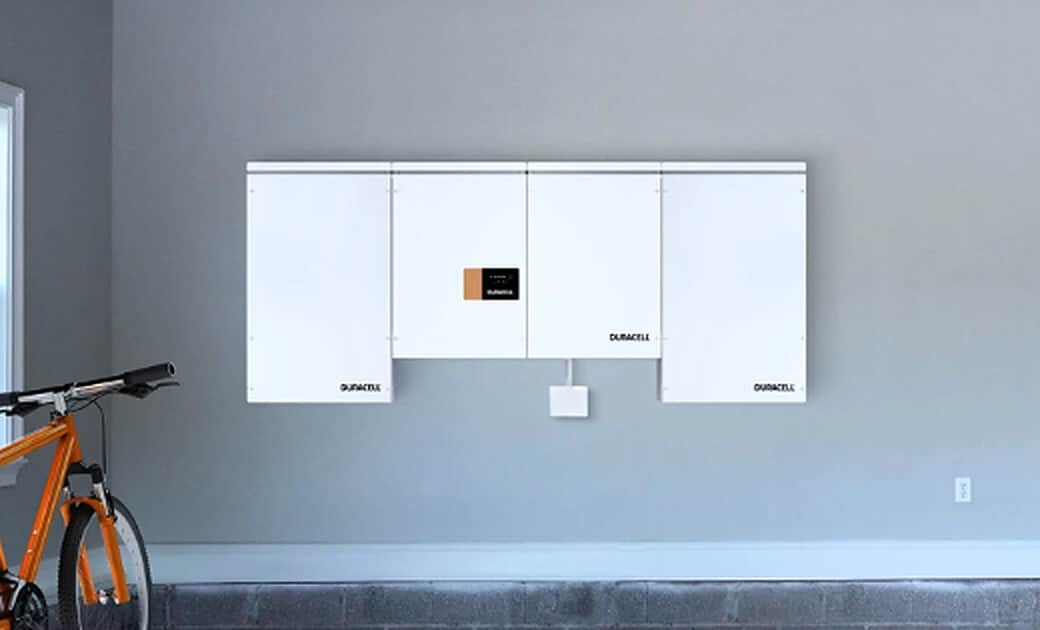
Duracell Power Center can be wall-mounted inside your garage to look like cabinets. Image from Duracell Power Center.
Jinko Solar Eagle RS
Jinko Solar is a global solar and storage supplier and is one of the largest solar companies in the world based in Jacksonville, Florida. The Eagle RS storage system offers consumers a “made in America” DC coupled, LFP battery. Jinko Solar also uses an app to monitor your system in real time. Jinko Solar also produces a line of Eagle solar panels which makes it a great fit for homeowners looking to go solar.
Specs:
- Power Rating: 7.6 kW
- Storage Capacity: 26.2 kWh
- Usable Capacity: 24.15 kWh
- Roundtrip Efficiency: 89.50%
- Depth of Discharge: 95%
- Chemistry: LFP
- DC Coupled
- Operating Temperature 14ºF to 122ºF
- Warranty: 10 years
- End of Warranty Capacity: 70%
What We Like:
- Higher depth of discharge at 95% means you can use more energy from your battery’s storage
- This battery has a larger usable capacity than others on our list (unless you add additional storage units) offering homeowners 24.15 kWh
- Integrated to the Enact Consumer App
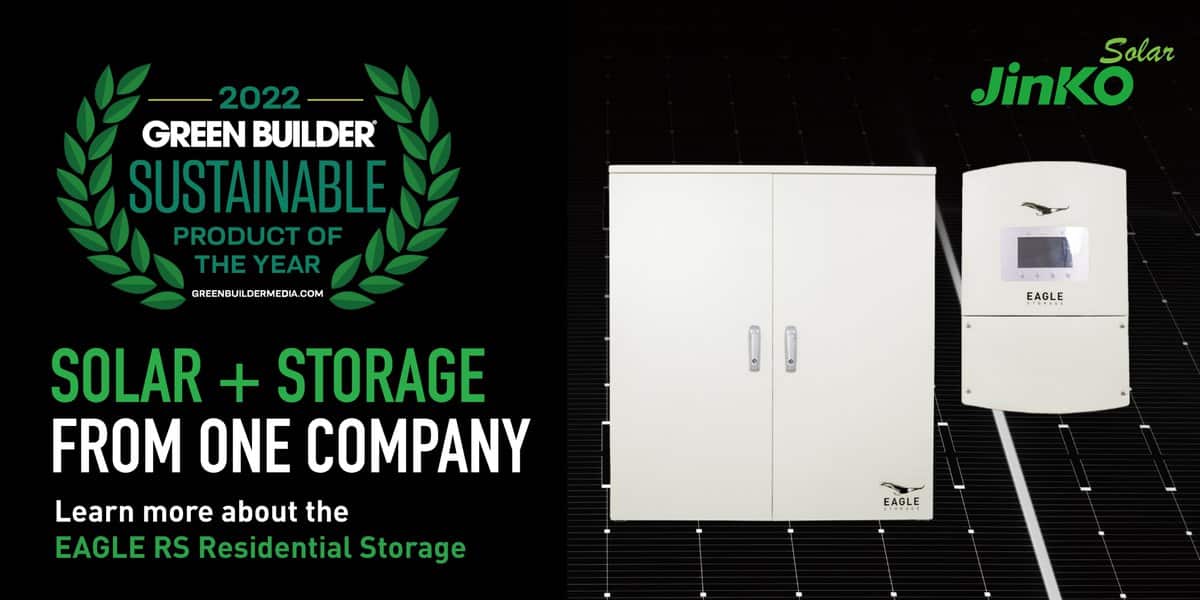
Jinko Solar offers solar and storage solutions with its Eagle RS backup battery. Image from Jinko Solar.
Tesla Powerwall+
Tesla is one of the biggest names in sustainable energy. Not only does the company design electric vehicles, but also solar panels and the Tesla Powerwall backup battery. The Powerwall+ is the newest model in Tesla’s storage line. Tesla offers homeowners energy backup storage, energy independence and the potential for 24-hour electricity.
Specs:
- Power Rating: 7 kW (no sun) / 9.6 kW (full sun)
- Storage Capacity: 13.5 kWh
- Usable Capacity: 13.5 kWh
- Depth of Discharge: 100%
- Continuous / Peak Power Output: 5.8 kW / 7.6 kW
- Roundtrip Efficiency: 97.50%
- Chemistry: NMC
- AC Coupled
- Operating Temperature: −4ºF to 122 °F
- Warranty: 10 years
- End of Warranty Capacity: 70%
What We Like:
- The Tesla Powerwall+ had the highest roundtrip efficiency of any battery on our list
- 100% depth of discharge means you can use more energy being stored in your battery
- Sleek, thing design and child-proofed with no exposed wires or heat vents
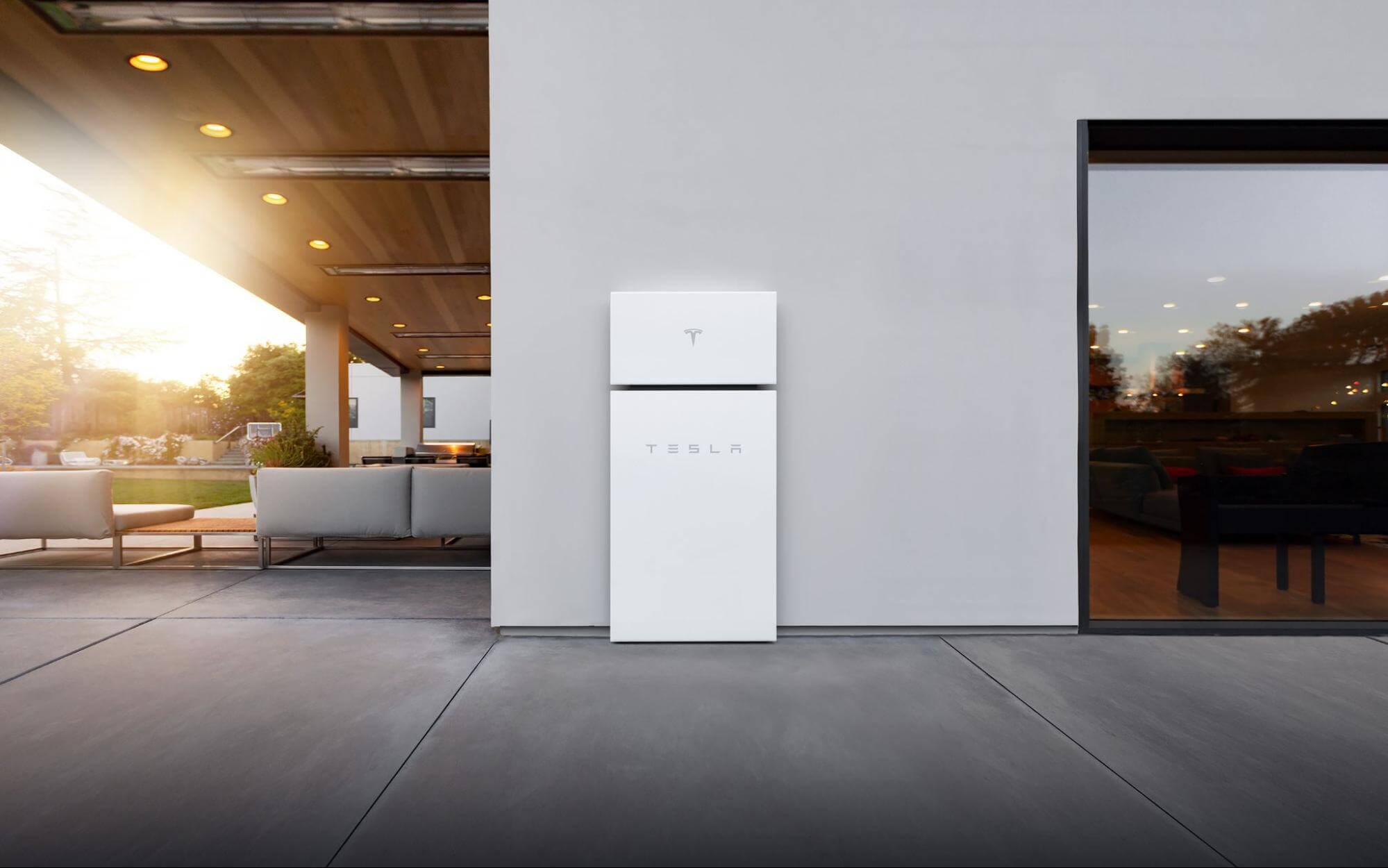
Tesla Powerwall+ offers a sleek, modern energy backup battery solution for your solar setup. Image from Tesla.
sonnen ecoLinx
German engineering brings you the sonnen ecoLinx, the premium version of its earlier model — the sonnen eco. The ecoLinx is compatible with smart homes and allows homeowners to manage their electricity usage. Using its mobile app, you can track energy usage and make decisions based on your household. The ecoLinx comes in different sizes offering different storage capacities from 12-30 kWh. The sonnen ecoLinx is also 100% recyclable, making it an eco-friendly option.
Specs:
- Power Rating: 7 kW
- Storage Capacity: 12 – 30 kWh (Depends on size)
- Depth of Discharge: 100%
- Roundtrip Efficiency: 81.60%
- Continuous / Peak Power Output: 8 kW / 12 kW
- AC Coupled
- Chemistry: LFP
- Ambient Operating Temperature: 41°F to 113°F
- Warranty: 15 years
- End of Warranty Capacity: 65%
What We Like:
- Longer warranty that other manufacturers on our list
- Lowest degradation level on our list, at 2.33% according to EnergySage.
- Variety of sizes and storage capacities, all with 100% depth of discharge
- Wide operating temperature range which may be better for homeowners in the Midwest and Northeast
What We Don’t Like:
- Lower end of warranty capacity at 65%, but the warranty is longer than average
- Heaviest battery on our list which may limit its placement in your home
- Lowest roundtrip efficiency on our list at 81.60%
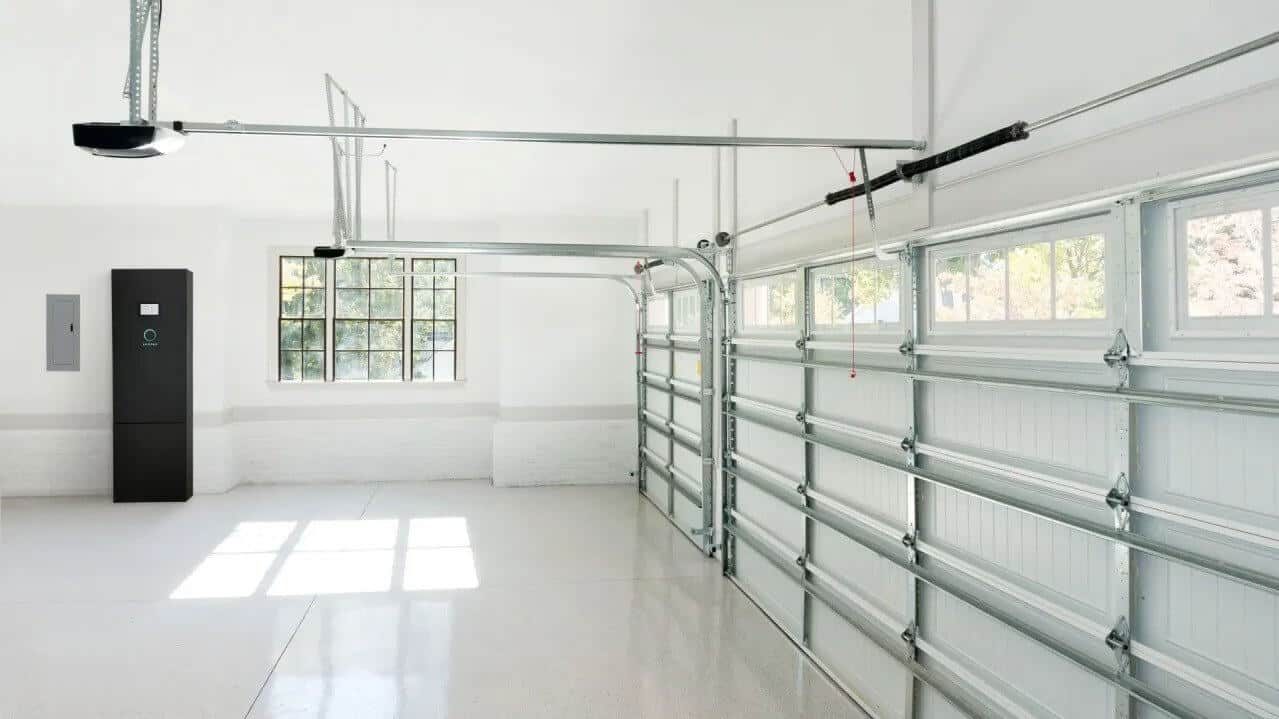
The sonnen ecoLinx is a floor mounted battery that can go in your garage and help you save energy. Image from sonnen.
Enphase IQ 10
Enphase offers homeowners an all-in-one AC coupled solar energy storage system. The Enphase IQ 10 is the company’s rebranded Enphase Encharge. The company boasts a quick and easy installation for its three storage units. This solar battery is compatible with new and existing solar system setups, but only with Enphase inverters. Homeowners have access to its mobile app that allows for monitoring and control.
Specs:
- Power rating: 3.84 kW
- Storage Capacity: 10.5 kWh
- Usable Capacity: 10.08 kWh
- Continuous / Peak Power Output: 3.84 kW / 5.7 kW
- Roundtrip Efficiency: 89-96%
- Depth of Discharge: 100%
- AC Coupled
- Chemistry: LFP
- Ambient Operating Temperature: 5º F to 131º F
- Warranty: 10-15 Years
- End of Warranty Capacity: 70%
What We Like:
- 100% depth of discharge, meaning you can use more of your battery’s capacity
- 96% roundtrip efficiency is on the higher end of our list, meaning your storage system allows you to use more of what energy you stored
- Integration with your smart home
- Optional five year warranty extension
- Can integrate to Enact Consumer App
What We Don’t Like:
- Similar price to a Tesla, but lower power rating and slightly lower storage capacity

Homeowners have access to Enphase IQ 10 and other backup battery products for indoor or outdoor storage. Image from NRG Clean Power.
Generac PWRcell
The Generac PWRcell (pronounced power cell) is a modular energy storage system that can help you save money and power your home in an outage. The 9 kW solar battery can be installed either inside or outside your home. Homeowners are offered four model types which vary in power rating, capacity and power output. This makes Generac a scalable option to meet your needs.
Specs:
- Power Rating: 4.5 – 9 kW (depending on model)
- Storage Capacity: 11.6 – 23.3 kWh (depending on model)
- Usable Capacity: 9 -18 kWh (depending on model)
- Continuous / Peak Power Output: 3.4-6.7 kW / 4.5-9 kW(depending on model)
- Depth of Discharge: 84%
- Roundtrip Efficiency: 96.50%
- DC Coupled
- Chemistry: NMC
- Operating Temperature: 41ºF to 104 °F
- Warranty: 10 years
- End of Warranty Capacity: 70%
What We Like:
- Second highest roundtrip efficiency after Tesla in our list
- Varying sized models to best meet your energy goals
What We Don’t Like:
- DC coupled batteries can be more difficult to install
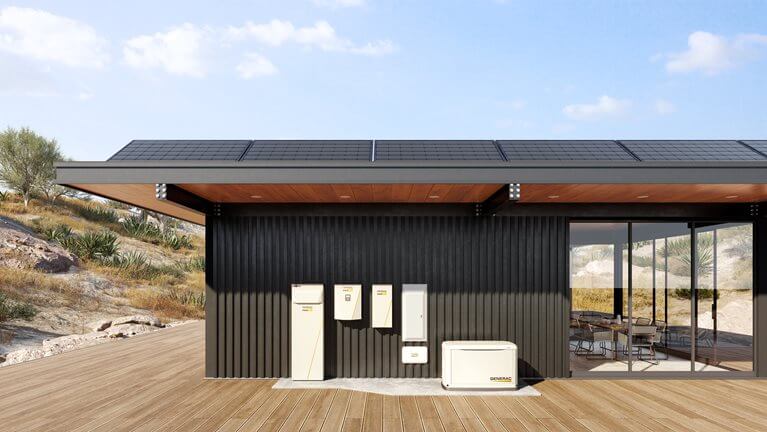
Generac PWRcell offers floor or wall mounted solar battery solutions for your home. Image from Generac.
LG Chem RESU 10H
LG Chem is a trusted brand in technology so it makes sense it is in the solar battery market. The brand’s RESU 10H can work with existing solar panel setups and can be scaled by adding a second storage unit. This is a great option for homeowners with lower energy needs or who want an affordable option.
Specs:
- Power Rating: 5 kW
- Storage Capacity: 9.8 kWh
- Usable Capacity: 9.3 kWh
- Continuous / Peak Power Output: 5 kW / 7 kW
- Depth of Discharge: 95%
- Roundtrip Efficiency: 94.50%
- DC Coupled
- Chemistry: NMC
- Operating Temperature: 14ºF to 104 °F
- Warranty: 10 years
- End of Warranty Capacity: 60%
What We Like:
- Higher roundtrip efficiency at 94.50%
- Similar to the Duracell Power Center, the RESU 10H is lower weight
- Can integrate to the Enact App
What We Don’t Like:
- While LG Chem is a trusted brand, consumers have experienced recalls for its solar batteries
- Lower end of the end of warranty capacity at 60%
- Temperature range might not be ideal for consumers in the Midwest or Northeast

LG Chem offers a variety of solar backup batteries, including the RESU 10H. Image from LG.
Panasonic EVAC-105 / EVDC-105 Standard
From one of the world’s most trusted technology companies, Panasonic released the EverVolt solar battery in 2019. Panasonic manufactures both AC & DC coupled EverVolt batteries. The Standard model is offered with a 4.6 kW power rating with 11.4 kWh usable capacity, but homeowners can also purchase the 5.5 kW Plus model with a higher usable capacity at 17.1 kWh. According to Panasonic, the Standard EverVolt can offer an average of six hours of backup energy.
Specs:
- Power Rating: 4.6 kW
- Storage Capacity: 13.5 kWh
- Usable Capacity: 11.4 kWh
- Continuous / Peak Power Output: 4.6 kW / 7.5 kW
- Depth of Discharge: Not Disclosed
- Roundtrip Efficiency: 86.0% (AC) / 90% (DC)
- Offers both AC & DC Coupled
- Operating Temperature: 41°F to 131°F
- Warranty: 10 years
- End of Warranty Capacity: 60%
What We Like:
- Offers both AC & DC coupled batteries to meet your solar system requirements
- Can charge without solar panels, using power from the grid
- Like most on our list, the EverVolt is modular and scalable
What We Don’t Like:
- The warranty is lower than others on our list, guaranteeing 60% at the end of 10 years
- Depth of Discharge information is not disclosed

Panasonic EverVolts can be wall or floor mounted indoor or outdoors. Image from Panasonic.
SolarEdge BAT-10K1P
Founded in 2006, SolarEdge is a worldwide company that offers a DC coupled home battery. The SolarEdge Home Battery can be integrated with SolarEdge’s panels and inverters to power your home. The company’s mySolarEdge app allows homeowners to monitor and control their energy usage. The battery’s 94.5% roundtrip efficiency means you can power more large appliances in an outage and lower your dependency on the grid.
Specs:
- Usable Capacity: 9.7 kWh
- Continuous / Peak Power Output: 5 kW / 7.5 kW
- Depth of Discharge: 100%
- Peak Roundtrip Efficiency: 94.5%
- DC Coupled
- Chemistry: NMC
- Operating Temperature: 14ºF to 122ºF
- Warranty: 10 years
- End of Warranty Capacity: 70%
What We Like:
- Homeowners can use the SolarEdge to simultaneously charge batteries and send energy to the grid — and potentially earn credits
- The SolarEdge Home Battery has a roundtrip efficiency of 94.5% — which is relatively higher on our list
- The mySolarEdge app monitors weather conditions and automatically charges your battery before storms reach your area
- Can integrate to the Enact App
What We Don’t Like:
- While the company is known worldwide, it is still relatively new to the U.S. market meaning there are less consumer reviews and industry literature
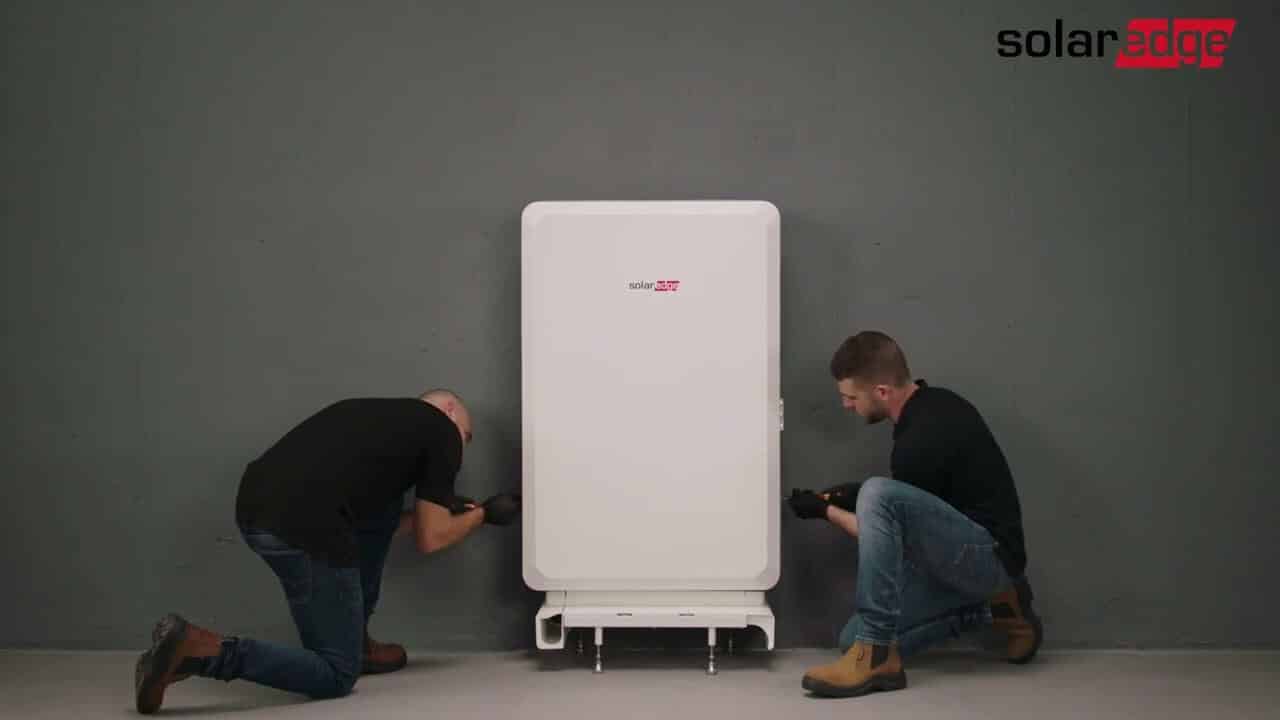
SolarEdge’s easy to install solar battery can be floor mounted and help power your home. Image from SolarEdge.
FranklinWH Energy Storage Inc. aPower
FranklinWH is an American company that has provided its backup battery since 2019. The aPower battery is its 2022 model and offers homeowners 13.6 kWh, a high depth of discharge and a high roundtrip efficiency. The aPower allows you to use your battery’s capacity to power more appliances more efficiently. Homeowners have access to the FranklinWH app which you can use to set different electricity settings for economic or energy-saving purposes.
Specs:
- Usable Capacity: 13.6 kWh
- Continuous / Peak Power Output: 5 kW / 10 kW
- Depth of Discharge: 100%
- Roundtrip Efficiency: 89%
- AC Coupled
- Chemistry: LFP
- Operating Temperature: -4ºF to 122ºF
- Warranty: 12 Years
- End of Warranty Capacity: 70%
What We Like:
- Wide operating temperature range could be ideal for homeowners in the Midwest or Northeast
- Scalable and modular energy storage allows homeowners up to 204 kWh of storage capacity
- 12 year warranty is longer than others in our list and guarantees 70% end of warranty capacity for your battery
What We Don’t Like:
- FranklinWH is an exciting but new brand, meaning there is less information for consumers to use in decision making
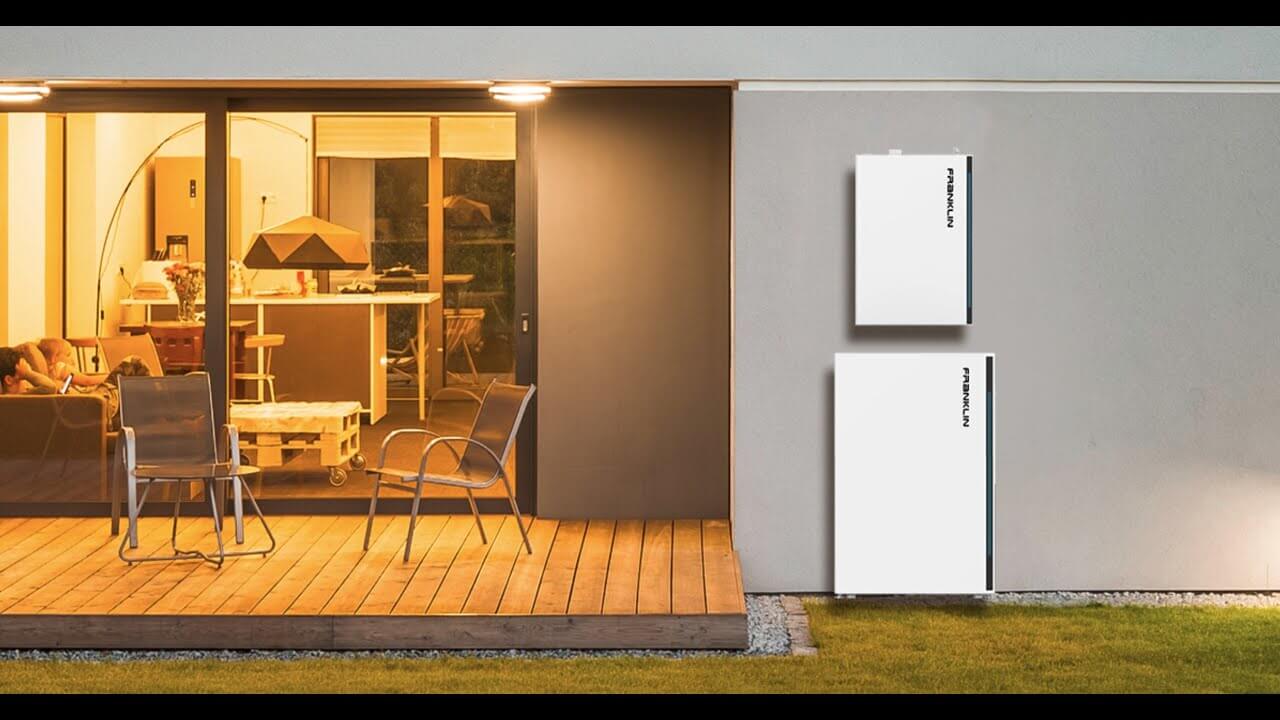
FranklinWH aPower can be stored indoor or outdoor with its modern design and clean, white look. Image from FranklinWH.
Conclusion
With solar batteries and solar energy in general, we understand you have options which can sometimes be overwhelming. It is important to know your options and review each battery. If you currently have a solar setup for your home or business, check which backup batteries are compatible with your system. If you’re new to solar and still deciding what setup you want, a solar battery can be an important component.
Enact Systems knows you have options and it might be overwhelming. You can schedule a conversation with one of our energy experts and we can help find the best solar system for your home. The best part is that you can choose what works best for you and we take care of the rest.
Key Definitions
Power Rating: The power rating of a battery refers to how much power a battery can provide at once. Simply, how many appliances your battery can power and which appliances it can power. Power rating is measured in kilowatts of power (kW).
Storage Capacity: The storage capacity means how long your battery can power your home. Technically, the capacity is the amount of electricity your battery is able to store and supply your home. Storage capacity is measured as power multiplied by time, or kilowatts by hours.
Usable Capacity: The usable capacity of your backup battery refers to how much power your battery can actually use to power your home. Some energy is lost in order to power your battery, which is why usable capacity is important to note. Similar to storage capacity, usable capacity is measured in kilowatt hours (kWh).
Peak Power Output: Peak power is the maximum amount of power that your battery can sustain for a short period of time. This is sometimes called a surge power output.
Continuous Power Output: The continuous power output is the amount of power that your battery can supply continuously, or the normal amount of power your battery can put out.
Roundtrip Efficiency: Roundtrip efficiency measures how well your energy storage system converts solar energy into electricity and how well it stores the electricity generated. Your system will lose some energy due to the process of putting energy into your battery and taking energy out of your battery. Specifically, this is energy loss due to converting from direct current (DC) to alternating current (AC). You can calculate this by taking the energy flowing into your battery by the energy you get out from your battery, measured as a percentage.
Depth of Discharge (DoD): The Depth of Discharge of your battery refers to the percentage of the battery energy that has been discharged relative to the overall battery storage capacity. The more power a battery discharges, the lower the charge will be — if you use 25% of your battery (discharge), 75% of your battery’s charge will be left (75%).
AC Coupled vs. DC Coupled
The two main options of solar batteries — alternating current (AC) coupled and direct current (DC) coupled. Both options have advantages and disadvantages. It is important to find the right battery that will work with your existing solar system. The difference between AC coupled and DC coupled batteries is the path the electric current takes when produced by your solar panels. Solar panels generate DC electricity, but your home’s appliances require AC electricity.
AC coupled solar systems convert your solar panels DC electricity to AC electricity through an inverter. The AC electricity will power your home and then be converted back to DC electricity when it is stored in your battery. Then when you use your battery, the electricity will be converted back from DC to AC electricity and power your home.
DC coupled solar systems, DC electricity goes from the solar panels to your battery and is then converted into AC electricity from your battery to your home. The electricity generated from solar will only be converted into AC electricity once from your panels to the inverter to your battery.
There are two main advantages of AC coupled batteries: ease of installation and you can send power back to the grid. AC coupled batteries may be easier to install, requiring less time and labor, and can be cheaper than DC coupled batteries. The disadvantage is that inverting DC to AC and then from AC to DC uses up some of the energy generated by your solar setup.
DC coupled batteries have one major advantage: it’s a more efficient battery option. There is only one inversion from DC to AC electricity. However, DC coupled batteries can be more difficult to install and incur higher installation costs due to labor or time.
Written by David Bartle, content writer
Find me on LinkedIn!

